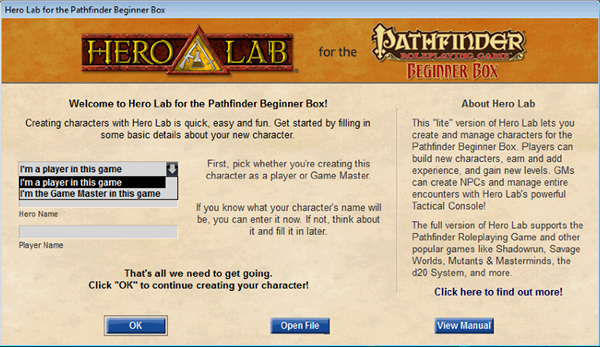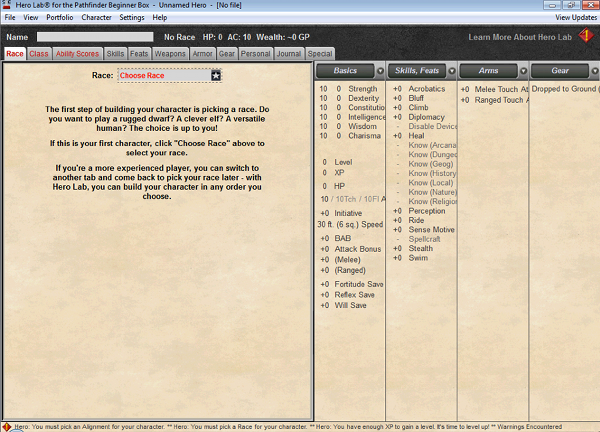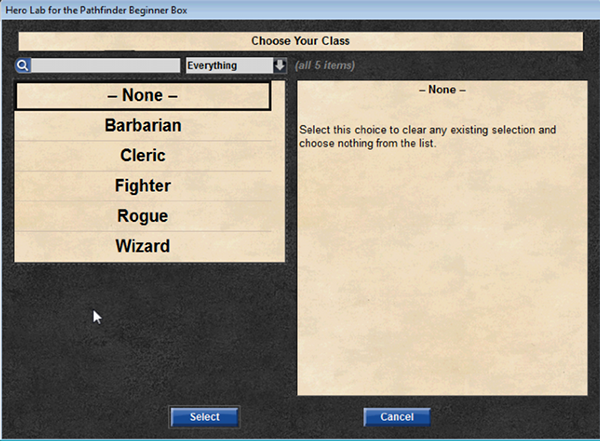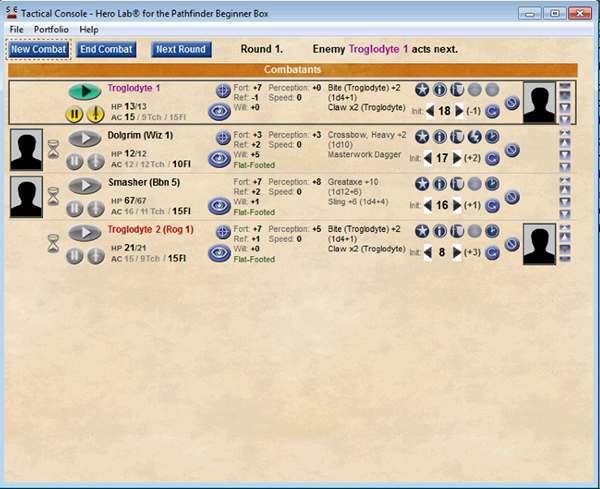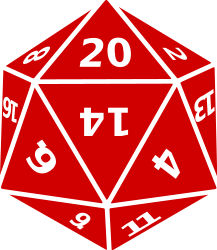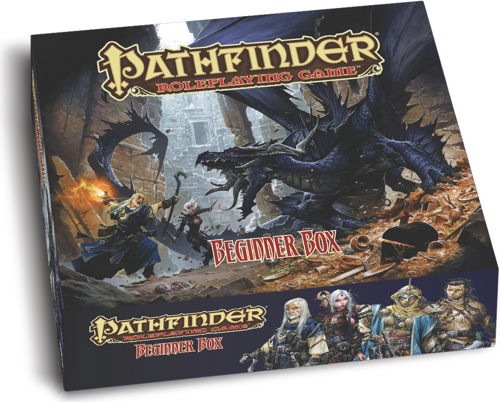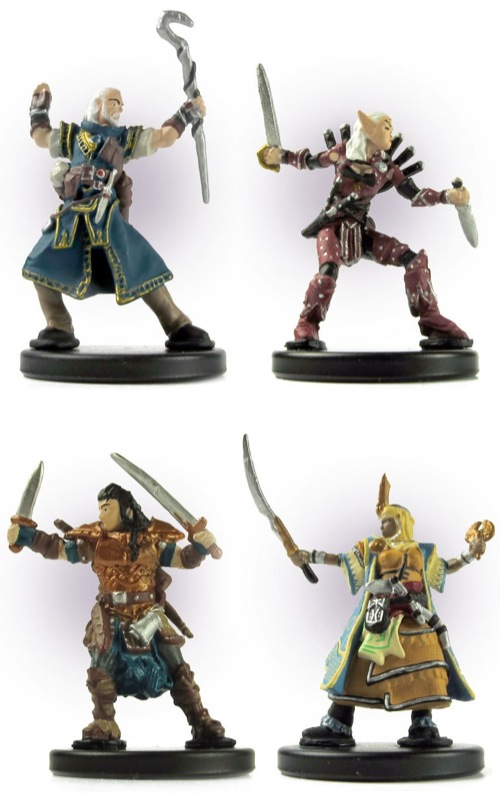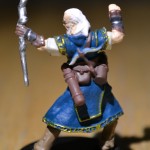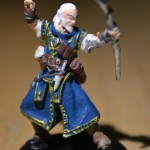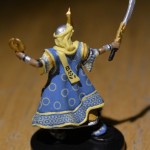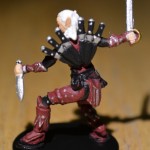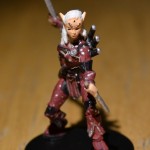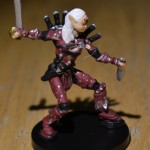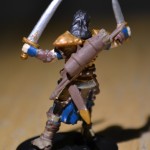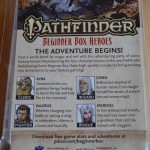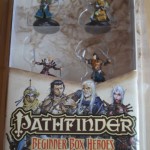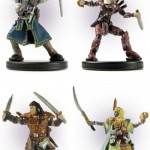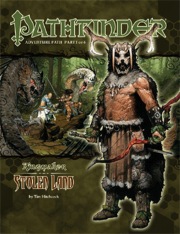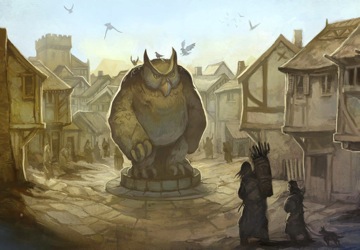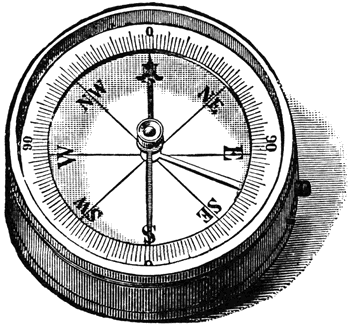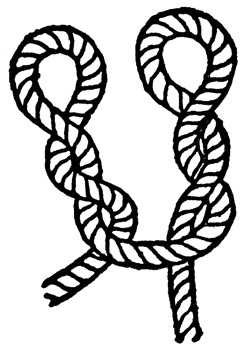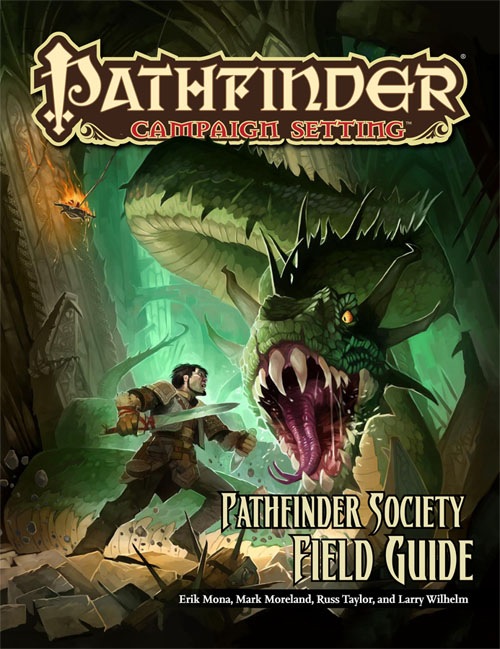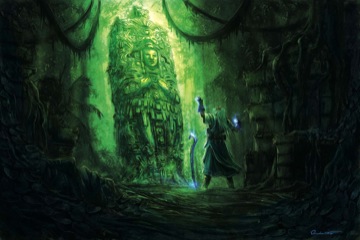 My son received the Pathfinder Beginner Box shortly before Christmas. Now, a little over a month later we have had time to play several sessions with it. With these sessions under our belt I wanted to post here at The Iron Tavern a little about the box from an actual play perspective.
My son received the Pathfinder Beginner Box shortly before Christmas. Now, a little over a month later we have had time to play several sessions with it. With these sessions under our belt I wanted to post here at The Iron Tavern a little about the box from an actual play perspective.
As reviews and many forum threads across the Internet will attest to, the Pathfinder Beginner Box is simply a great product. With an easy to read Hero’s Handbook to get a player started, a GM’s Guide to help the budding new GM, dice, cardboard pawns and flipmat you have everything you need to get started in one box. If you are looking for an introduction to Pathfinder or are new to RPGs in general, the Pathfinder Beginner Box provides a very solid entry point to that audience.
I wanted the Beginner Box as a set of rules my son could easily read and make use of on his own. He is eight and I have introduced him to a house ruled down version of Pathfinder before, but the core rulebook was a bit big for him to read and grok the rules on his own. I thought the Beginner Box might simplify the game a bit and allow him to read the rule books on his own between sessions instead of having things told to him by me.
It succeeded very well at accomplishing that. He has been toting around the Hero’s Handbook and GM’s books nearly every day. He is usually looking at character options, studying spells and equipment or giving a thorough look over the monster section. He’s done mock battles between characters he has built and monsters that catch his interest. One day as he was getting out of the car he stopped, went back and covered the Hero’s Handbook up with a jacket, leaving his iPod Touch in plain view saying “I have to cover up the valuables.”
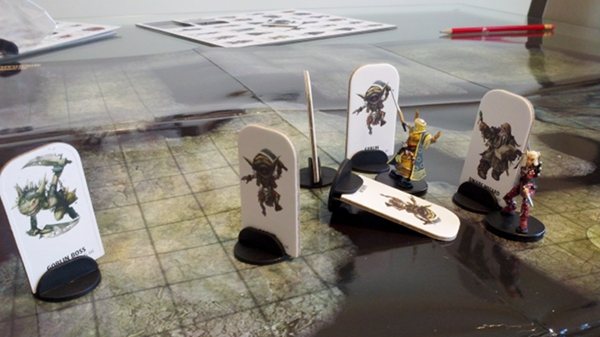 As for actual game play, we’ve also had a very good time with the sessions I have run so far for them. We started with Black Fang’s Dungeon, the adventure included in the book. It went very well and served as a good way to teach skill checks, traps and combat in small bite sized chunks. My son was playing a Dwarf Wizard and a GM controlled Merisiel and Kyra for some extra support.
As for actual game play, we’ve also had a very good time with the sessions I have run so far for them. We started with Black Fang’s Dungeon, the adventure included in the book. It went very well and served as a good way to teach skill checks, traps and combat in small bite sized chunks. My son was playing a Dwarf Wizard and a GM controlled Merisiel and Kyra for some extra support.
Using a rather unique way around the final encounter the adventure ended as a success. The next session we played the free download adventure from the Paizo site for the Beginner Box. That went well, but he quickly complained it was too short! Part of that was simply due to choosing the most direct route up front.
The past two sessions were done with former Free RPG Day adventure, Hollow’s Last Hope. I just swapped in Sandpoint for the starting town as that is where the first sessions have taken place. It was an easy swap and both sessions of that were very popular with him.
Next weekend we will continue on with Crown of the Kobold King, also transplanted from Falcon’s Hollow to Sandpoint. I suspect it will go well also as so far the only complaint from my son has been the shorter free download adventure and that was only because it was short!
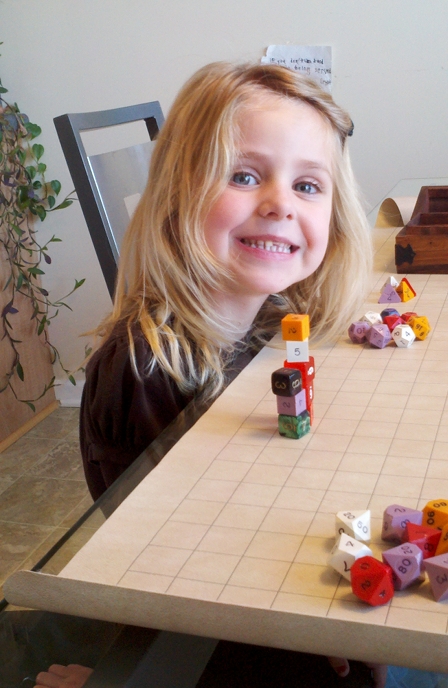 The game play has been excellent, the simplified Pathfinder rules have been easy for him to pickup and play. His younger sister joins us frequently to roll the dice and participate some as well. Her grasp of the rules is obviously more limited, but she has a great time hanging out with us as we play and does offer up ideas along the way (much to her brother’s chagrin!).
The game play has been excellent, the simplified Pathfinder rules have been easy for him to pickup and play. His younger sister joins us frequently to roll the dice and participate some as well. Her grasp of the rules is obviously more limited, but she has a great time hanging out with us as we play and does offer up ideas along the way (much to her brother’s chagrin!).
In addition to the great gaming we have had with me as GM, I strongly suspect he will be running his own adventure for me in the near future. He has hinted at it and seems to be eying the rulebooks from the GM slant. If this happens, fully expect an account of him running his first game!


